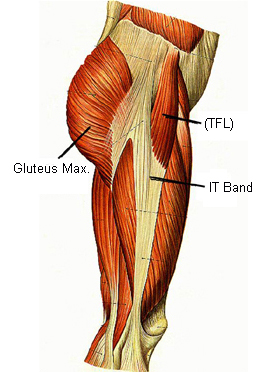That’s Right, Stop Icing. Old habits are hard to break, but icing of sprains, strains, and sore muscles is a BIG NO NO. I know, many docs and PTs are still supporting the “ice is good” treatment. Well, all research on ice and inflammation shows that ice actually hinders your body’s innate ability to repair tissue. This creates a poorly healed injury, and potentially more pain in the long run!
Fact: There are 3 stages of the healing process after an injury, be it small or large. I’ll focus on Stage 1, The Inflammatory Stage, where macrophages come in like garbage cleaners to clean up the injured sight. They bring along with them cells that help build and grow tissue that was previously damaged. So without the macrophrages, we do not get optimal healing of muscle, ligament, or other soft tissues. When you add ice to an injury, you are effectively stopping the blood flow to that area, thus not allowing the macrophages to enter and do their job.
So How Do I Get The Swelling To Go Down? Swelling occurs when LYMPH is unable to take all the garbage away from the injured site. When using ice, you are under the pretense that BLOOD moves the garbage away. But this is not how our body works- blood vessels DO NOT carry the “garbage” from an injured site, and since LYMPH VESSELS DO, that means we need to promote lymph movement. And we do that by contracting the muscles around the injured area or using compression- like with massage or a semi-tight bandage. Even if your arm is in a cast, you can help along the healing process by moving your fingers, which moves the muscles in your forearms, promoting lymph to move away from the injured site.
“Seriously, do you honestly believe that your body’s natural inflammatory response is a mistake?” – Dr. Nick DiNubile, Editor in Chief of The Physician And Sports Medicine Journal
But Icing Helps With The Pain I’m gonna have to be a strict Mom here and say, Yeah, for the moment it does. But are you looking for short term pain relief, or long term healing and pain relief? And please think twice before taking advil, aspirin, or ibuprofen if you get injured or sore- they mess with the healing process even more than ice does! Not to mention, tearing up your liver and kidneys along the way. If you want your body to be in top shape, allow it to heal on its own, while giving it some support.
Compress, Move, Massage The more movement you can do without causing unwanted pain, the better your injury will heal. Now, this doesn’t mean, put weight on it right away. It means mobilize it as soon as you can without creating pain. Take the joint through a range of motion that is comfortable for you, and seek the help of a wellness expert or trusted physical therapist if you’re unsure of what to do, pain does not decrease, or swelling does not go down.
When it comes to pain, we are all too quick to jump at the quick fix (usually a pill or surgery), but there is always a process behind pain. Allow your body to go through the process it needs, and give it support and encouragement through movement, massage, chiropractic, or any other modality you see fit before you consider surgery or reach for the pills.
Yes, Knee Injuries Can Heal On Their Own I have a dear dancer friend who injured his knee in London while dancing. He saw a doctor there who was very blunt with him. The doctor said, wait 6 weeks to allow your knee to heal before you see a doctor in the US. Otherwise, they will most likely recommend you have surgery, not to mention the costly MRI. Lo and behold, his knee pain was gone in just that amount of time, and after 2 years it is still feeling as stable and strong as it did before the injury. Yes, he had to baby the knee for 6 weeks and pay attention to its movement, but Imagine where he’d be if he went in for surgery? Of course, not all knee injuries are created equal, and yes, sometimes surgery is the best option. Just know your options.
A Piece Of Literature To Chew On “When ice is applied to a body part for a prolonged period, nearby lymphatic vessels begin to dramatically increase their permeability (lymphatic vessels are ‘dead-end’ tubes which ordinarily help carry excess tissue fluids back into the cardiovascular system). As lymphatic permeability is enhanced, large amounts of fluid begin to pour from the lymphatics ‘in the wrong direction’ (into the injured area), increasing the amount of local swelling and pressure and potentially contributing to greater pain.” The use of Cryotherapy in Sports Injuries,’ Sports Medicine, Vol. 3. pp. 398-414, 1986
I hope you enjoyed my little rant. Please feel free to do your own research! Your body should be in your hands.
Sincerely,
Leah Nelson, LMT
photo by Neil T






Follow